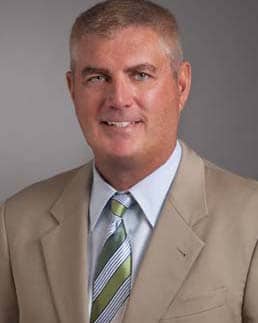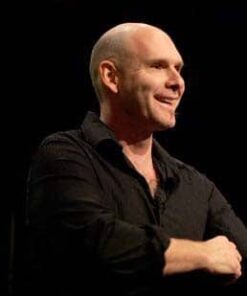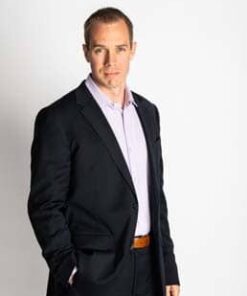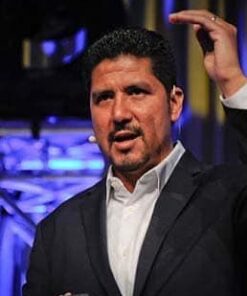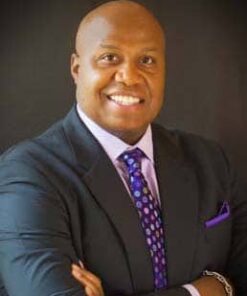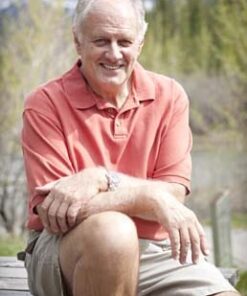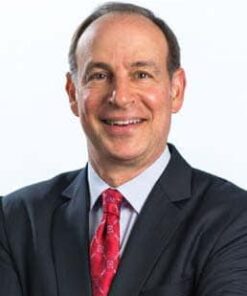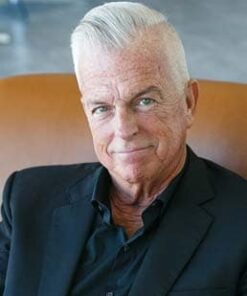“IT’S YOUR SHIP – ACHIEVING BREAKTHROUGH PERFORMANCE”
When Mike Abrashoff took command of the USS Benfold, morale was low, turnover was high, and the ship’s performance ranked near the bottom of the Pacific Fleet. Just twelve months later, the Benfold was ranked #1 – using the very same crew. The lesson was clear: leadership matters and culture is everything. This inspiring talk is for every individual and organization looking for practical and usable ways to take organizational performance to new heights. In Mike’s case, he realized that before the ship’s performance could change, he had to change his leadership style. Mike worked to create a culture of trust and empower his crew to take charge and use ingenuity and initiative to improve every aspect of the way things were done.
Top-down leadership is dead, so when the crew would present a problem, Mike became famous for responding, “What would YOU do? It’s YOUR ship!” Mike’s presentation leaves audiences with the tools and inspiration to accomplish big goals.
THE VIRTUAL LEADER’S ROADMAP
Mike Abrashoff had to change his leadership mindset when he took over the near-worst performing ship in the Navy. The situation was dire. If performance did not improve, sailors could have gotten injured…or worse. In response, Mike quickly adopted a new set of principles to guide a new way of leading. His focus was on building trust and authentic ways of engaging. It was about listening to and empowering his crew who then went on to make the USS Benfold the best ship in the entire U.S. Navy. These very same principles are the foundation of success for organizations that embrace working virtually. In the short term, many organizations have found virtual work arrangements actually increase the effectiveness of employees. That effectiveness may not be sustainable if leaders and organizations don’t master a new skill-set of how to lead people they can’t see. It’s about measuring results – not activity; and about finding ways to let people know their efforts are appreciated. Those who succeed in leading in the virtual environment will create a decisive competitive advantage.
NO LIMITS – DON’T LET GOALS BECOME LIMITATIONS
Sometimes in our professional lives, we might think we are in a battle to beat an adversary or a competitor when in actuality we are really in competition with ourselves but just haven’t figured it out yet. When battling the competition, you want to come out on top, if only by one more sale or maybe a few percentage points. Other times, someone at a higher level gives you a goal based on some median expectation set for others. When Mike Abrashoff took command of a well below-average ship in the U.S. Navy, his goal was to get to average. He initially set average goals and expectations for himself and his crew until one day it dawned on him: his ship could be much better than just average. It was Mike’s eureka moment: realizing they weren’t in competition with anyone but themselves. To be their best they had to stop putting limits on what they believed was possible. That realization changed Mike Abrashoff’s approach to leadership and led the same crew to accomplish one of the most remarkable turnarounds that were chronicled in the Harvard Business Review, Fast Company magazine, and Mike’s New York Times and Wall Street Journal bestselling book, IT’S YOUR SHIP. This presentation will challenge audiences to think differently on how to set expectations while realizing the only limits that you have are self-imposed.
GO DEEPER WITH HALF-DAY AND FULL-DAY PROGRAMS
Dive deep into the Leadership Roadmap with a half-day or full-day program. The sessions are most often used as a follow-on to Mike’s keynote and provide attendees with powerful tools and strategies to apply in their work environment. Depending on the circumstances, these longer sessions are facilitated by a senior strategist from Mike’s firm, Aegis Performance Group, or Mike himself. These sessions create an exciting interactive atmosphere where participants examine the key components of high-performing leaders, teams, and organizations. Inquire for more details and program descriptions.
SAFETY IS NO ACCIDENT
One of the critical issues facing organizations today is safety… not just safety in the workplace but safety in all facets of our personal lives. After all, if people get injured at home, it affects their on-the-job performance, as well as medical costs.
No matter how hard we may try, you can’t order safety. It’s a culture we have to create and each person has to feel it personally. A US Navy destroyer is an inherently dangerous place and no Captain, no matter how good he or she thinks they are, can order safety. In the year prior to taking command of USS Benfold, 31 sailors out of a workforce of 310 were involved in some type of injury-producing mishap. The first afternoon, after I took command of the ship, one of my sailors, was involved in a DUI off base after going to a bar after work. The very night I took command of the ship, one of my sailors was severely beaten in a mugging because he walked out the wrong gate of the base after sunset in one of the worst parts of town. It was a newly reporting sailor who didn’t know that you don’t go to that part of town after sunset. That fact wasn’t included in our welcome aboard program for newly reporting personnel.
Are all of these connected? Absolutely!!! It speaks to the culture that we try to create. You can never have a great organization if your top priority is not the safety of your people. The one thing that drove me throughout my entire tenure was that I never wanted to write the parents of any of my sailors and tell them that their son or daughter wasn’t coming home because of something we did or something we failed to do. When I looked at safety on the ship, I assumed my sailors wanted to be safe and so everything I looked at was whether our processes facilitated a safe culture.
We implemented a program whereby every week, I would focus on one of the 24 divisions. I would inspect their workspaces for safety and other hazards. I would observe sailors doing their maintenance and quizzing them on the safety precautions. I reviewed their safety training program and participated in seminars with them. During these events, they could ask questions about anything they weren’t sure about. I wanted them to understand that the concept of safety was portable to their families and personal lives, as well. We trained on the dangers of drinking and driving and if they were drinking, they could call a local cab company to give them a free ride home which was then paid for out of our morale fund (and not taxpayers’ money). By the way, we also tried to create a culture of respect whereby sailors didn’t have to go home after work and blow off steam and drink to excess.
Any sailor could stop any process if they thought safety was being impaired. Any sailor had a direct line to me if they thought their chain of command wasn’t sufficiently concerned or didn’t see what they were seeing. Every sailor knew that I felt their safety was a top priority of mine and not just lip service.
The result? In my last year in command, there were two minor incidents; down from 31 incidents two years prior. Was I satisfied? No!!! Two is two too many. But we never missed an opportunity to try and drive that culture of excellence and safety. They go hand in hand.


